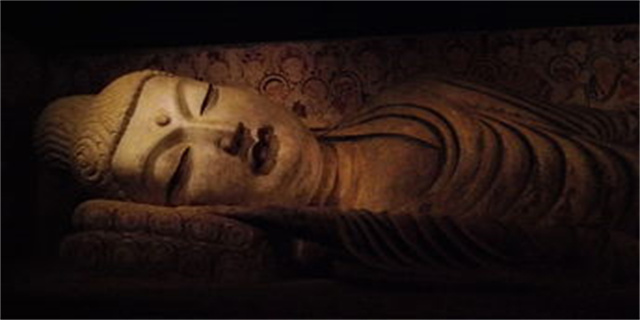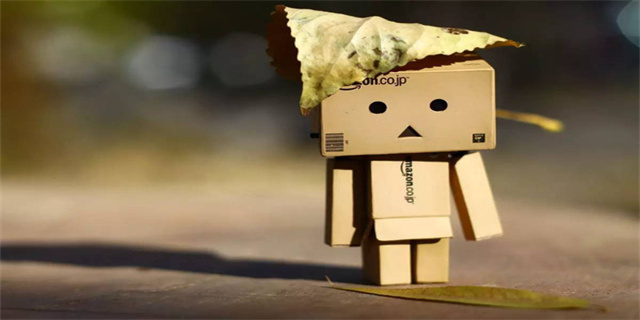首页 > 百科达人 正文
Urban Art: The Expression of Graffiti
Introduction
Graffiti, a form of urban art, has long been a controversial subject. Some consider it an act of vandalism, while others view it as a powerful form of self-expression. This article explores the world of graffiti, its rich history, and its impact on society.
The History of Graffiti

Graffiti traces its roots back to ancient times. The cavemen who painted on cave walls were, in a way, the earliest form of graffiti artists. However, modern graffiti as we know it began to emerge in the late 1960s and early 1970s in New York City. It started as a subculture within disadvantaged neighborhoods, where individuals used the city's walls and trains as a canvas for their artistic expression. By the 1980s, graffiti had spread to other major cities around the world, becoming a global phenomenon.
The Artistic Elements

Graffiti is not just about spray painting words or images on walls; it is a complex art form that incorporates various elements. Typography, color schemes, and composition are all essential components of graffiti. Artists carefully choose their lettering styles, often using intricate designs to create visually stunning pieces. Additionally, graffiti often incorporates social and political messages, reflecting the artists' views on current issues.
The Controversy Surrounding Graffiti

Graffiti has always been a hot topic of debate. While some people appreciate its artistic value, others see it as a blight on the urban landscape. The legality of graffiti varies across different jurisdictions, with some cities embracing it as a legitimate art form and others cracking down on illegal tagging. Supporters argue that graffiti brings vibrancy to otherwise dull urban spaces, providing a platform for artists to express themselves. However, opponents argue that it promotes vandalism and detracts from the overall beauty of a city.
The Impact on Society
Graffiti undoubtedly has a profound impact on society. For many marginalized individuals, it provides an outlet for self-expression and a means of reclaiming public spaces. Graffiti can also serve as a powerful tool for social activism and raising awareness of important issues. In recent years, street art festivals and exhibitions have gained popularity, celebrating graffiti as a legitimate form of artistic expression. These events not only showcase talented artists but also contribute to the revitalization of neglected urban areas.
The Future of Graffiti
As the perception of graffiti continues to evolve, its future remains uncertain. Some predict that it will become even more accepted as a form of urban art, with cities dedicating designated spaces for graffiti. Others argue that graffiti will always exist on the fringe, involving risk and rebellion. Whatever the future holds, graffiti will continue to challenge our notions of art and public spaces, provoking important discussions about creativity, freedom of expression, and the role of art in society.
In conclusion, graffiti is a multi-faceted form of urban art that has captivated and divided opinions for decades. Its history, artistic elements, controversy, and impact on society make it a compelling and complex subject. Whether seen as destructive or artistic, it is an undeniable part of the urban landscape that continues to push boundaries and ignite impassioned debates.
猜你喜欢
- 2024-09-23 批量下载mp3(批量下载音乐MP3,轻松收藏你喜爱的音乐)
- 2024-09-23 点到为止的意思(探讨「从点到为止」的意义)
- 2024-09-23 皇家马德里队员(皇家马德里队员的风采)
- 2024-09-23 graffiti(Urban Art The Expression of Graffiti)
- 2024-09-23 中国石化天然气分公司(中国石化天然气分公司:推动清洁能源发展)
- 2024-09-23 我独自升级小说(一个人孤独升级)
- 2024-09-23 新疆财经大学mba(新疆财经大学MBA项目:培养卓越管理者)
- 2024-09-23 3d17500(3D打印技术的广泛应用)
- 2024-09-23 antediluvian(Life Before the Great Flood Unveiling the Antediluvian Era)
- 2024-09-23 韩国mnet音乐排行榜(韩国Mnet音乐排行榜 发掘出色音乐人才的平台)
- 2024-09-22 prilosec(Prilosec A Solution for Acid Reflux Relief)
- 2024-09-22 北京时间校准毫秒在线显示(北京时间校准毫秒在线显示)
- 2024-09-23批量下载mp3(批量下载音乐MP3,轻松收藏你喜爱的音乐)
- 2024-09-23点到为止的意思(探讨「从点到为止」的意义)
- 2024-09-23皇家马德里队员(皇家马德里队员的风采)
- 2024-09-23graffiti(Urban Art The Expression of Graffiti)
- 2024-09-23中国石化天然气分公司(中国石化天然气分公司:推动清洁能源发展)
- 2024-09-23我独自升级小说(一个人孤独升级)
- 2024-09-23新疆财经大学mba(新疆财经大学MBA项目:培养卓越管理者)
- 2024-09-233d17500(3D打印技术的广泛应用)
- 2024-07-24容槿傅宵权全文免费阅读(容槿傅宵权小说在线免费阅读)
- 2024-08-09chengren(成年人的成长)
- 2024-08-27receptionist(职业探索:成为一名前台接待员)
- 2024-08-29陕西省公务员局(陕西省公务员招聘)
- 2024-04-08股票601818(中国光大银行:稳中求进,全力发展)
- 2024-04-11hcpl2630(HCPL2630:高速光耦合器的优势与应用)
- 2024-05-31错误码0x00000001(错误码0x00000001分析与解决办法)
- 2024-06-06欧时力男装官网(欧时力男装:时尚品质与优雅兼具)
- 2024-09-23批量下载mp3(批量下载音乐MP3,轻松收藏你喜爱的音乐)
- 2024-09-23graffiti(Urban Art The Expression of Graffiti)
- 2024-09-23我独自升级小说(一个人孤独升级)
- 2024-09-22北京时间校准毫秒在线显示(北京时间校准毫秒在线显示)
- 2024-09-22兴业基金管理有限公司(兴业基金管理有限公司:引领投资风潮,稳健增值)
- 2024-09-22北京西山国家森林公园(探索北京西山国家森林公园)
- 2024-09-22yy怎么改马甲(如何改变YY直播间的马甲形象)
- 2024-09-22芥子空间app(芥子空间APP:开启属于你的私人学习空间)
- 猜你喜欢
-
- 批量下载mp3(批量下载音乐MP3,轻松收藏你喜爱的音乐)
- 点到为止的意思(探讨「从点到为止」的意义)
- 皇家马德里队员(皇家马德里队员的风采)
- graffiti(Urban Art The Expression of Graffiti)
- 中国石化天然气分公司(中国石化天然气分公司:推动清洁能源发展)
- 我独自升级小说(一个人孤独升级)
- 新疆财经大学mba(新疆财经大学MBA项目:培养卓越管理者)
- 3d17500(3D打印技术的广泛应用)
- antediluvian(Life Before the Great Flood Unveiling the Antediluvian Era)
- 韩国mnet音乐排行榜(韩国Mnet音乐排行榜 发掘出色音乐人才的平台)
- prilosec(Prilosec A Solution for Acid Reflux Relief)
- 北京时间校准毫秒在线显示(北京时间校准毫秒在线显示)
- 呼风唤雨指什么生肖(自由驰骋,操控命运的生肖)
- reviews(电影《怒火大街》的观后感)
- 郭德纲单口相声下载(郭德纲相声作品下载)
- 韶关市人事考试网(韶关市人事考试网报名指南)
- 不遇倾城不遇你(不尽倾城,也倾你心)
- 运动会加油稿50字左右(为梦想而努力)
- 拜仁慕尼黑阵容(拜仁慕尼黑的壮阵:巅峰时刻的豪华阵容)
- 兴业基金管理有限公司(兴业基金管理有限公司:引领投资风潮,稳健增值)
- 北京西山国家森林公园(探索北京西山国家森林公园)
- alternately(交替进行的活动)
- yy怎么改马甲(如何改变YY直播间的马甲形象)
- 巧妙绝伦的意思(巧思独出:寻找人生的意义)
- 支付宝理财产品(支付宝投资理财新选择)
- denying(Refuting the Misconceptions about Climate Change)
- 10001网上营业厅(10001网上营业厅介绍)
- 芥子空间app(芥子空间APP:开启属于你的私人学习空间)
- constellation(Exploring the Wonders of the Night Sky Constellations)
- alphabetical(Alphabets and their Significance)
